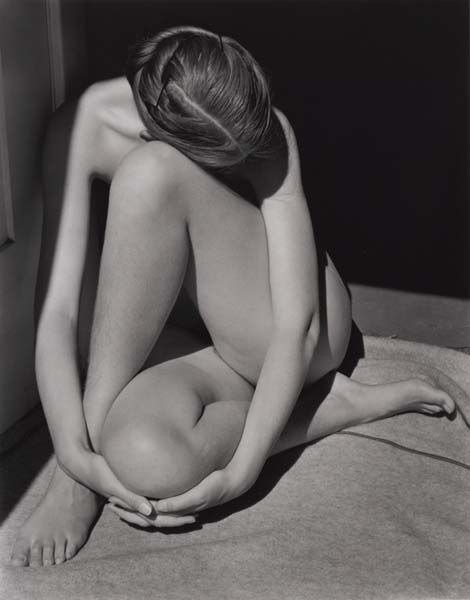Look at me!
dal 30/7/2010 al 2/10/2010
Segnalato da
Tokyo Metropolitan Museum of Photography
30/7/2010
Look at me!
Tokyo Metropolitan Museum of Photography, Tokyo
Portrait photographs of nude

Introduction
Shortly after its invention the daguerreotype was used to create a photograph of a nude. In the paintings of the time, however, actual people were never portrayed in the nude, the pictures depicting anonymous figures. Nudes have been painted since pre-Christian times, but even as late as 1865 Manet was censured when he submitted his ‘Olympia’ to the Paris Salon, because it was said to have been modeled by an actual prostitute. In this way, the depiction of real people in the nude remained taboo until the end of the nineteenth century. Up until that time, nearly all the nudes that appeared in paintings depicted Eve, from the Old Testament, or Aphrodite (Venus) from Grecian mythology. It was not until some time later that nude photographs, depicting people whose identity could be recognized, were to be publicly displayed.
This exhibition starts with photographs that were taken in Japan from the mid-to-late nineteenth century. The majority of these were produced as souvenirs for foreign travelers, and provide a glimpse of the manners and customs of the times. Although they are not portraits in the true meaning of the term, they are included here as an example of the way in which the human figure was portrayed in Japan.
Expression
When photography first made its debut, people were amazed by the accuracy with which it could portray a subject, although sometimes it was criticized for being ‘too real’. This was particularly true when photography was used to depict a nude; the wrinkles and sagging flesh were displayed with excessive reality, preventing it from being beautiful like a painting. In Pictorial photography, which took its model from painting, nudes were depicted using soft focus and other techniques, adopting similar poses to those seen in paintings in order to pursue the ideal of beauty through photography. As a result, these photographs did not depict an individual, rather, in many cases they produced an ambiguous, symbolic image. Gradually, however, photographers began to focus on medium’s intrinsic function, abandoning classical techniques to create new forms of artistic and documentary expression.
Family
Nude photography is generally assumed to refer to pictures of well-proportioned young women, but family members comprise another common subject. It is not only lovers or wives who are depicted in this way; children and even whole families are often portrayed ins the nude. Traditionally, art works focusing on the family are referred to as ‘conversation pieces’ and the genre can be traced back to the Renaissance. The subjects of this type of painting were generally rich families who were depicted in a state of exaggerated happiness. The photographs displayed in this section, however, are not merely records of familial bliss, they date from the period when the term ‘nuclear family’ began to appear in the media and reflect the changes that took place in the family structure at this time. They show families in which the traditional hierarchy of father, mother and children, that sustained the patriarchal system, has disappeared but depict emotions and relationships in which there is no place for the term ‘family love’.
Self (Identity)
Among nude photographs there are some wonderful works that use the curves or volume turn the human body into a form of beautiful object. This section does not deal with these, however; instead it features works that concentrate on the subjects as individuals. Some are of famous models and actresses, but not all nudes are of beautiful women, it also includes men and self-portraits. These nudes, which stress the subject’s individuality or personality are not merely beautiful but evoke various emotions in the viewer.
‘Look at me!’exhibition will feature about 150 works from the collection of the Tokyo Metropolitan Museum of Photography.
If you have any questions about TMMP, press are welcome to contact the Department of Public Relations. High-resolution images for publication are also available by e-mail. Tel 03-3280-0034, FAX 03-3280-0033, Mail press-info@syabi.com
Tokyo Metropolitan Museum of Photography
Yebisu Garden Place, Tokyo
Sat-Wed 10-18 . Thu,Fri 10-20
Admission: adults 700, college students 600, high school students and ver 65 400 yen
Admission is free of charge for primary school students & younger children, disabled persons and their caretakers.
Admission is free of charge for persons aged 65 or older on the third Wednesday of each month



